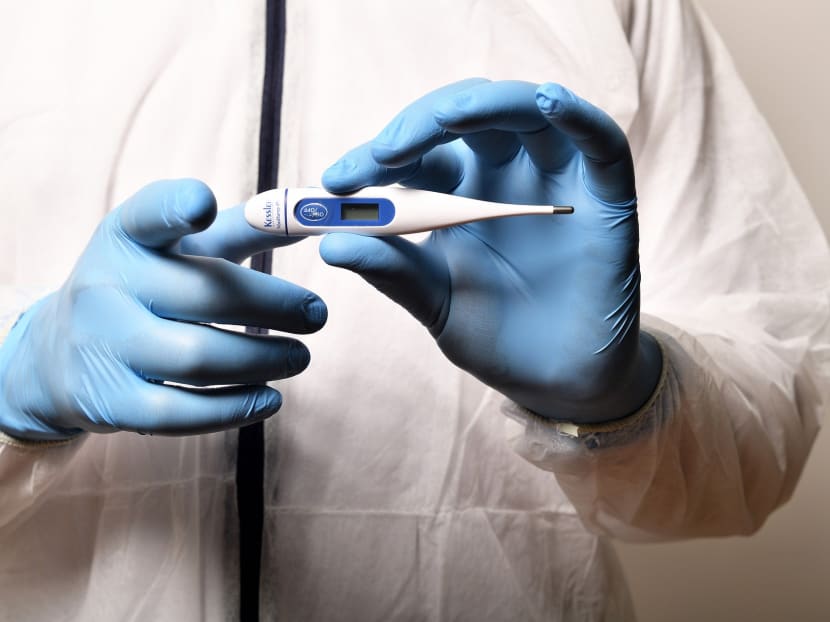Explainer: Why some Covid-19 patients visit the doctor twice or thrice before they receive a diagnosis
SINGAPORE — Of the 50 patients who have tested positive for the novel coronavirus Covid-19 in Singapore, more than a handful had visited a doctor twice or thrice before it was confirmed that they were infected by the virus.

Experts say it is not necessarily straightforward to diagnose a person with the novel coronavirus Covid-19.
SINGAPORE — Of the 50 patients who have tested positive for the novel coronavirus Covid-19 in Singapore, more than a handful had visited a doctor twice or thrice before it was confirmed that they were infected by the virus.
Why do some patients receive a diagnosis after one visit to the clinic while others require multiple visits before testing positive for the virus? TODAY takes a closer look.
INITIAL SYMPTOMS OF COVID-19 VIRUS ARE MILD
The initial symptoms of the Covid-19 coronavirus are similar to flu or the common cold, said Associate Professor Hsu Li Yang, and that is why general practitioners are sometimes not able to identify patients who are suspected of having the virus on their first visit to the clinic.
“Without other indicators such as a recent travel history to mainland China or contact with other confirmed cases, it would not be easy for GPs to differentiate between the virus and other more common respiratory viral infections,” said Assoc Prof Hsu, who also heads the Infectious Diseases Programme at Saw Swee Hock School of Public Health.
Agreeing, Professor Leo Yee Sin told CNA on Tuesday (Feb 11) that in the first week of the disease, the patient’s symptoms can be non-specific and very subtle. He or she may tell the doctor that they are a bit unwell, have a bit of a sore throat or a little bit of cough.
“These are very common manifestations of all the respiratory viruses that can cause acute respiratory illness,” said Prof Leo, who is the executive director of the National Centre for Infectious Diseases (NCID).
“So just by these clinical indicators, we cannot tell whether it’s this coronavirus or (a) thousand and one different viruses out there that can cause acute respiratory illness.”
Because of this, the initial test may not be accurate as the amount of viral material available to sample is too little for the tests to detect the virus, said Dr Leong Hoe Nam, an infectious diseases specialist at Mount Elizabeth Novena Specialist Centre.
He added that over time, as the disease becomes more and more overt, the test becomes more accurate in identifying the virus in an infected patient.
PROBLEMS WITH SAMPLING
Another reason that infected patients may go undetected in the first instance is that the sample taken from the patient may not have been good enough for the test to identify the virus, said Dr Leong.
“The (best samples) are taken at the back of the nose. If you have a lousy sample then you have a lousy result. The doctors or nurses who (conduct the test) must be able to do it consistently to have a more consistent result.”
Dr Leong said another possibility could be that the mechanics of the test are flawed such that the criteria that are being used to assess whether the virus is present may not capture all instances of the virus.
“At the very beginning of the outbreak, we thought that (one set of criteria) is a good way of picking up the virus but as we see more and more cases and we realise that more cases are being missed out, then we may have to look at (other factors to identify the virus),” he said.
However, he noted that this is unlikely to be the case as following the Sars outbreak in 2003, doctors here are more familiar with the family of coronaviruses of which Sars and Covid-19 are strains and are aware of which places to sample so as to accurately detect the virus.
WHY IS MORE THAN ONE TEST NEEDED TO MAKE A DIAGNOSIS?
As the virus may not be easily detected in some infected patients early in the course of the disease, a second sample for testing taken on a different day or at a different time would help to reduce the risk of a false-negative result, said Prof Hsu.
Dr Leong added that while the polymerase chain reaction (PCR) test — used to identify the Covid-19 in infected patients — accurately identified every patient infected with Sars in 2003, it has not been the case for this strain of the coronavirus.
This may reflect the different viral dynamics where there are certain days when the illness can be detected better, he said.
WHAT SHOULD PATIENTS WHO RECEIVE A NEGATIVE RESULT DO?
In situations where a patient is a high suspect case and his test comes back negative, Dr Leong said he should go to see the doctor again to look for an alternative diagnosis.
“Since we cannot confirm, then we should look for an alternative diagnosis. If we find an alternative diagnosis, then we are happier.”
Meanwhile, Prof Hsu said patients who do not recover after a few days and patients who start to feel worse should go and see a doctor again.
Dr Leong added that for patients whose first test returns negative, doctors can be more liberal with handing out medical leave in case of a false negative.
“If everyone plays their part and the patient does not go out, the worst case scenario is that the household is infected but the virus does not leave the household.
“A more liberal use of medical leave with strict compliance to it (by the patient) may help abate the outbreak,” he said.











